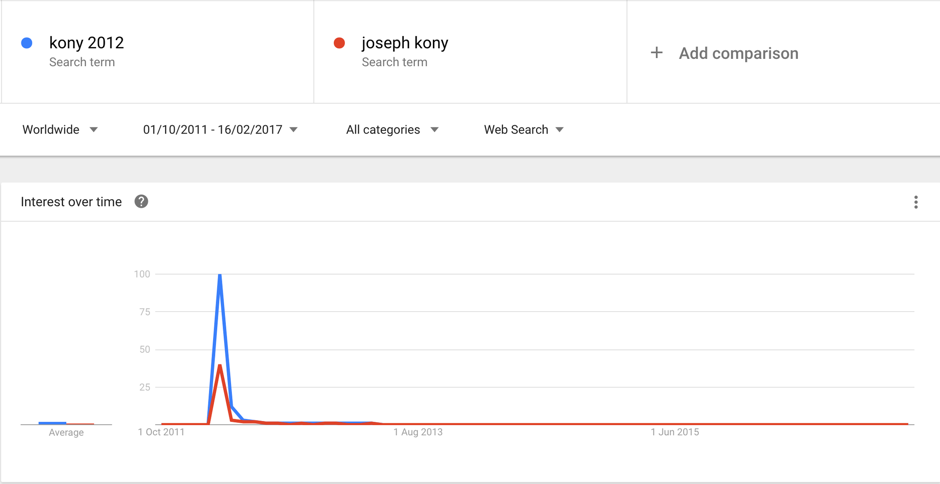
…Is the kind of clickbait-y title you might want to consider making responsible use of, if the above proposition is of interest to you.
A lot of our clients come to us asking how to create viral videos. We understand where they’re coming from: for over a decade, the word “viral” has signified the holy grail of online marketing, a golden ticket to instant recognisability and engagement on a transcendental scale. And, in our dreams, we have a big red button in our office which we can press at will, causing the video of our choice to blow up in a perfectly controlled explosion.

Unfortunately, this happy scenario must remain a megalomaniac’s daydream. The big red viral button hasn’t been invented yet, and never will be – because unpredictability is key to the value of viral content. If there was a universal formula for getting billions of views, views would be worthless. You can guarantee that legions of people will view your video: the good old fashioned way, by paying a fortune. But views from organic traffic are far more valuable than from paid advertising, because they represent the approval of real people, a vote of confidence that a piece of media is worth your time and attention. It's a form of credit which can be manipulated but not assured. That’s why there’s always a lottery element with trying to create viral content. Many videos achieve reasonable popularity; only one in a million go truly viral.
That said, there’s plenty you can do to improve your chances. While loads of videos go viral by fluke, many of the biggest ones – especially those with the most longevity and cultural impact – were carefully masterminded events.
1. CULTIVATE YOUR AUDIENCE
It’s easier to spread a message when you’re preaching to the converted. Kony 2012 is an example of a viral phenomenon that had years of legwork behind it, with creators Invisible Children running campaign after campaign of live screenings in schools. They built an enormous audience of real-world communities who were primed and ready to evangelise the message when Kony 2012 dropped.
It might come as a disappointment to anyone who sees viral content as a miraculous shortcut to online fame, but the truth is that the best way to ensure that your video has maximum impact is to have a large, pre-existing, receptive audience. Less of a shortcut and more of a long game.
2. IDENTIFY INFLUENCERS AND PUSH THROUGH SOCIAL NETWORKS
It’s no great revelation that if someone famous is affiliated with your video, more people are going to watch it. But for those of us without access to reams of A-listers, it’s still worth figuring out which entities with a following might have a stake in sharing your video, and drawing it to their attention.
It's not so hard to go viral when you're James Cordon and you feature Adele in your video.
When you launch the video, don’t hold back on promoting it. Ask people in your personal networks to share it. Familiarize yourself with Reddit: it’s the engine that drives viral content. Submit your video to social news networks, and tweet it at any bloggers or personalities who have an interest in the topic.
3. TOPICALITY
Keep abreast of current affairs and what’s got people talking. Chiming in on the trending topic of the week has great results when done right. A recent example is Dutch comedy show Zondag met Lubach, who gained international attention with their Trump parody video in which they propose the foreign policy plan “America First, the Netherlands Second”, currently at 9m views. This spawned a torrent of follow-up videos featuring different countries making their pitch for second place.
However, jumping onto the current affairs bandwagon can also backfire if you’re not careful. In 2016, a Texas mattress company tried to capitalise on the anniversary of 9/11 with this catastrophic video:
Needless to say, it wasn’t well received. They’ve also got 9m views, but somehow I doubt it’s boosted their sales much.
The trick with current affairs is to be selective with what you engage with. Overdo it and you’ll seem repetitive and soulless; to avoid this, only address topics that are relevant to your brand and your audience. Most importantly – have tact.
4. TIMING
Primetime viewing is Monday and Tuesday mornings, when people check in on the media as they settle down to work. This also gives time for your video to gather momentum over the week. Avoid weekends, when people are more likely to be doing things other than compulsively scanning the internet in search of distraction. Bear U.S. timezones in mind if you’re going for global reach.
5. TELL A (SIMPLE) STORY AND CONNECT EMOTIONALLY
The obvious and essential quality, and the hardest to nail. Why do we bother with all this media stuff anyway? Your audience is hungry for stories, so deliver. But not an overcomplicated one: you don’t want your video to seem like a huge investment, and you should be able to snappily summarise the concept in 140 characters or less.
Kony 2012 is an interesting exception to this rule, clocking in at 30 minutes. The reason it was able to go viral despite its length was that it had a strong, simple message, with a powerful emotional and moral incentive to share the video.
At the core of any good story is emotion, but when it comes to spreading online content, some emotions are more effective than others. Unsurprisingly, the extremes of awe, excitement, amusement, anger and anxiety have more momentum than inert feelings like contentment and sadness. You want people to feel passionate enough to actively share the video. It goes without saying that this is not the medium for conveying the subtle modulations of human experience.
Most of this boils down to common sense. In the end, there are two ingredients to going viral: you have to make something that a lot of people like, and also be very lucky. Or a cat.
If you follow these steps, will your video go viral? Maybe; probably not; but if you consistently create content in this way, you’ll likely gain a decent following. Which was sort of the point in the first place, wasn’t it?
Going viral in the vast majority of cases means getting five minutes in the spotlight and then being forgotten about. Memes are ephemeral and capricious beasts. Check out the Google Trends for Kony 2012:

As marketers who seek to generate long-term brand awareness and loyalty, a safer bet is to ignore the hype and focus on engaging your audiences with regular quality content. In other words, stick to marketing.
Posted 22 February 2017 by